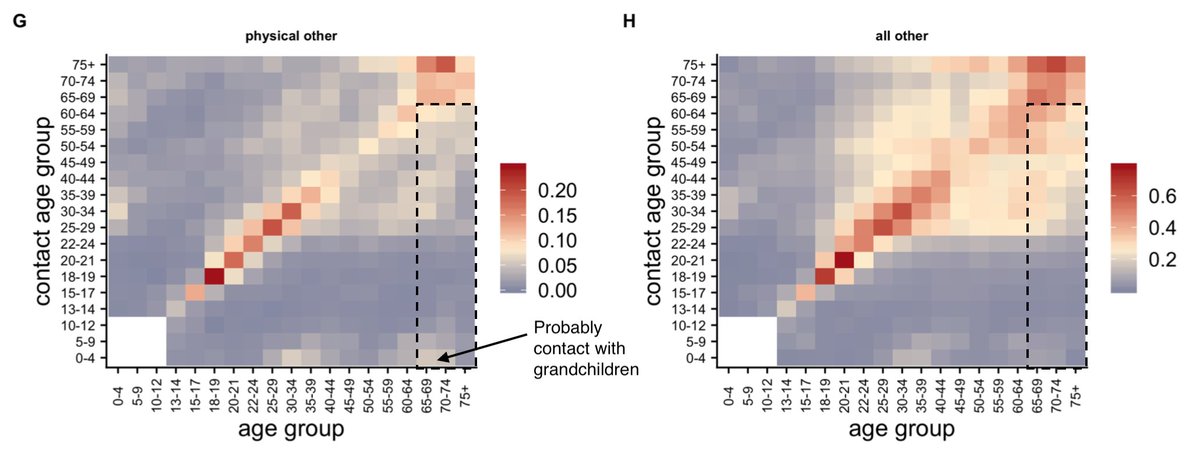I'm seeing more and more suggestions that groups at low risk of COVID-19 should go back to normal while high risk groups are protected. What would the logical implications of this be? 1/
First, let's pick an example definition of risk. If we use infection fatality risk alone for simplicity (which of course isn't only measure of severity), there is a clear age pattern, which rises above ~0.1% around age 50 and above ~1% around age 70 (medrxiv.org/content/10.110…) 2/ 

Suppose hypothetically we define the over 65 age group as 'high risk'. That's about 18% of the UK population, and doesn't include others with health conditions that put them at more at risk of severe COVID. 3/
The question, therefore, would be how to prevent any large outbreak among 'low risk' groups from spreading into 'high risk' ones without shutting these risk groups out of society for several months or more (if that were even feasible). 4/
There have been attempts to have 'shielding' of risk groups (either explicitly or implicitly) in many countries. But large epidemics have still tended to result in infection in these groups, because not all transmission routes were prevented. 5/
For context, here's data on pre-COVID social contacts between different age groups in UK outside home/work/school (from: medrxiv.org/content/10.110…). Dashed box shows over 65s reporting contacts with under 65s. 6/ 

So in this hypothetical example, how to prevent contacts in the box from spreading infection into the over 65s? Removing interactions in that box would be removing a large part of people's lives, but could the contacts be made less risky? 7/
One option would be to use rapid testing to make sure that these contacts are not infectious, e.g. testing attendees ahead of events/venues/gatherings. But remember, 18% of population are over 65, so that's a lot of (low risk) contacts who would need to be tested regularly. 8/
Then there's the question of what happens if contacts are positive... Would they need to self-isolate? People might well do anyway if they knew they're infected, which could reduce wider transmission... 9/
Depending on what % of population is defined as at high risk, and how many contacts are tested regularly and isolate, could well get a situation where measures reduce transmission in the low risk groups too, leading to a low reproduction number. 10/
If this were to happen, it may become equivalent to a light-touch suppression approach via mass testing:
https://twitter.com/AdamJKucharski/status/1303245754853658624?s=2011/
It wouldn't be the first example of a situation where we start with two different approaches but end up with similar outcomes:
https://twitter.com/AdamJKucharski/status/1292861098971070467?s=2012/
This thread obviously just picks a hypothetical example. But hopefully it shows it's important to explore the logical implications of a particular scenario, because it won't necessarily lead where we might initially assume. 13/13
• • •
Missing some Tweet in this thread? You can try to
force a refresh
















